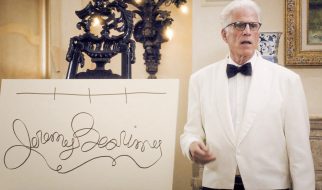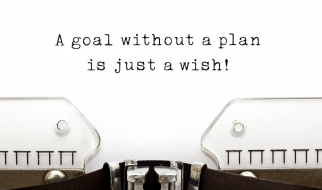By Charles Duhigg

These are notes on ideas and concepts I found interesting ? not a comprehensive summary of the book. Buy the book ?
What are habits?
A habit is just a choice that we deliberately made at some point (how to eat, how often to drink, when to go for a jog, etc), and then stop thinking about, but continue doing ? often every day.
Put another way, a habit is a formula our brain automatically follows. When I see CUE, I will do ROUTINE in order to get REWARD.
By understanding how it happens, you can rebuild those patterns in whichever way you choose.
Habit loops
All habits follow the same, simple, three-step loop:
I. Cues
- First, there is a cue. This is a trigger that tells your brain to go into automatic mode, and which habit to use.
- Cues can be almost anything, from a visual trigger to a time of day, an emotion, a sequence of thoughts, the company of particular people, etc.
II. Routines
- Next, there is the routine. This can be physical, mental, or emotional.
- Routines can be incredibly complex or fantastically simple.
III. Rewards
- Finally, there is the reward. This helps your brain figure out if this particular loop is worth remembering for the future.
- Rewards can range from food or drugs that cause physical sensations, to emotional payoffs, such as the feelings of pride that accompany praise or self-congratulation.

When a habit emerges, the brain stops fully participating in decision making. It stops working so hard, or diverts focus to other tasks. So, unless you deliberately fight a habit ? unless you find new routines ? the pattern will unfold automatically.
Habits never really disappear. They?re encoded into the structures of our brain. The problem is that your brain can?t tell the difference between good and bad habits, so if you have a bad one, it?s always lurking there, waiting for the right cues and rewards.
Habits = water
There are these two young fish swimming along and they happen to meet an older fish swimming the other way, who nods at them and says ?Morning, boys. How?s the water?? And the two young fish swim on for a bit, and then eventually one of them looks over at the other and goes ?What the hell is water??? David Foster Wallace
The water is habits: The unthinking choices and invisible decisions that surround us ? and which, just by looking at them, become visible again.
Keystone habits
Some habits matter more than others in remaking our lives (or businesses).
These are ?keystone habits?, and they can influence how people work, eat, play, live, spend, and communicate.
Keystone habits teach us that success doesn?t depend on getting every single thing right, but instead relies on identifying a few key priorities and fashioning them into powerful levers.
The habits that matter most are the ones that, when they start to shift, dislodge and remake other patterns. For example, a common personal keystone habit for many people is regular exercise. It?s common for people who nail get that right start to sleep and eat better, drink less, etc.
How to create new habits
One of the reasons habits are so powerful is that they create neurological cravings. Most of the time, these cravings emerge so gradually that we?re not really aware they exist, so we?re often blind to their influence.
But as we associate cues with certain rewards, a subconscious craving emerges in our brains that starts the habit loop spinning.
This is how new habits are created: By putting together a cue, a routine, and a reward, and then cultivating a craving that drives the loop.
To create a new habit (such as running each morning), you need to choose a simple cue (e.g. leaving your gym clothes out, lacing your sneakers before breakfast, etc), and a clear reward (e.g. a midday treat, the satisfaction of completing the run, etc).

But, studies have shown that a cue and a reward alone aren?t enough for a new habit to last. Only when your brain starts expecting the reward ?craving the endorphins or sense of accomplishment ?will it become automatic to lace up your shoes every morning.
The cue, in addition to triggering a routine, must also trigger a craving for the reward to come.
The Golden Rule of habit change
We know that a habit cannot be eradicated. Instead, it must be replaced. Most habits are most malleable when the golden rule is applied:
To change a habit, you must keep the old cue, and deliver the old reward, but insert a new routine.
- Use the same cue.
- Provide the same reward.
- Change the routine.
Almost any behaviour can be transformed if the cue and reward stay the same.

But this isn?t always enough: For a habit to stay changed, people must believe change is possible. In many cases, this belief only emerges with the help of a group (e.g. Alcoholics Anonymous).
Basically: One way to dramatically increase your odds of success is to commit to changing as part of a group.
How to change your habits
Recap: All habits follow the loop of (A) cue, (B) routine, and (C) reward.
To understand your own habits, you need to identify the components of your habit loops. Once you?ve diagnosed the habit loop of a particular behaviour, you can look for ways to supplant old vices with new routines.
There are four steps to doing this:
- Identify the routine
- Experiment with rewards
- Isolate the cue
- Have a plan
Step 1: Identify the (B) routine
With most habits, the routine is the most obvious aspect: It?s the behaviour you want to change.
Example: Every afternoon, you go to a cafe and buy a cookie.
In this scenario, the routine is that you get up from your desk, walk to the cafe, buy and cookie, and eat it while chatting with friends.
Once you?ve figured out the routine, you must isolate the cue. Hunger? Boredom? Low blood sugar? You need a break?
And what?s the reward? The cookie? Change of scenery? Distraction? To figure this out, you need to experiment.
Step 2: Experiment with (C) rewards
Most cravings are obvious in retrospect, but incredibly hard to see when we are under their sway.
To figure out which cravings drive particular habits, you can experiment with different rewards. This can take days, weeks, or longer.
During this period don?t feel pressure to make lasting change ? think of yourself as a scientist collecting data.
When you feel the urge to start the routine, adjust it so that it delivers a different reward. E.g. Instead of going to buy a cookie, go for a walk around the block. The next day, try buying an apple. The next, a cup of coffee, etc.
What you choose to do instead of your original reward isn?t important. The point is to test different hypothesis to determine which craving is driving your routine.
By experimenting with different rewards, you can isolate what you are actually craving, which is essential in redesigning the habit.
Step 3: Isolate the (A) Cue
The reason why it?s so hard to identify cues that trigger our habits is because there is too much information bombarding us as our behaviours unfold.
E.g. Do you eat breakfast at a certain time (1) because you are hungry, (2) because the clock says 7:30, (3) because your family is eating, etc?
To identify a cue amid the noise, we can identify categories of behaviours ahead of time to scrutinize in order to see patterns.
Almost all habitual cues fit into one of five categories:
- Location
- Time
- Emotional state
- Other people
- Immediately preceding action
So, if you?re trying to figure out the cue for a habit, write down five things the moment the urge hits:
- Where are you?
- What time is it?
- What?s your emotional state?
- Who else is around?
- What action preceded the urge?
Step 4: Have a plan
Once you?ve figured out your habit loop ? you?ve identified the reward driving your behaviour, the cue triggering it, and the routine itself ? you can start to shift the behaviour.
Remember the habit formula: When I see (A) CUE, I will do (B) ROUTINE in order to get (C) REWARD.
To re-engineer the formula, you just need to start making choices again. Break the loop by changing it up. The easiest way to do this is to make a plan.
Back to the cookie example: By answering the questions in step 3 for a few days, it became clear that:
- The cue is time-based: Roughly 3:30 in the afternoon.
- The routine: going to the cafe, buying the cookie, and chatting with friends.
- Via experimentation, it was obvious it wasn?t actually the cookie that was craved, but the opportunity to socialize.
So, a plan to break the loop could look like this:
At 3:30 every day, I will walk to a friend?s desk and talk for 10 minutes.
Obviously, changing some habits is more difficult than this, but the framework is a good place to start.
Once you understand how a habit operates ? once you diagnose the cue, routine and rewards ? you gain power over it.


